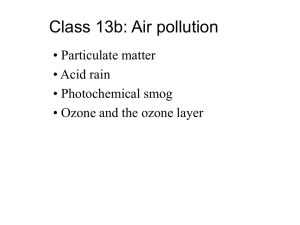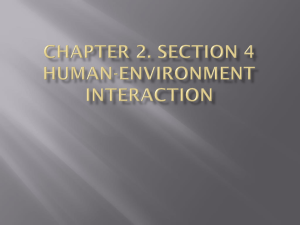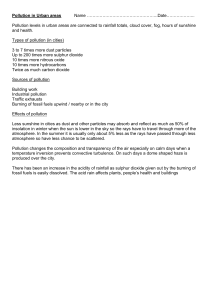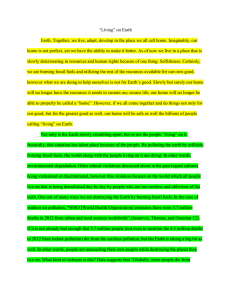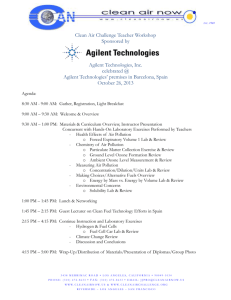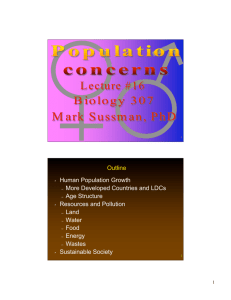Junior High Health
advertisement
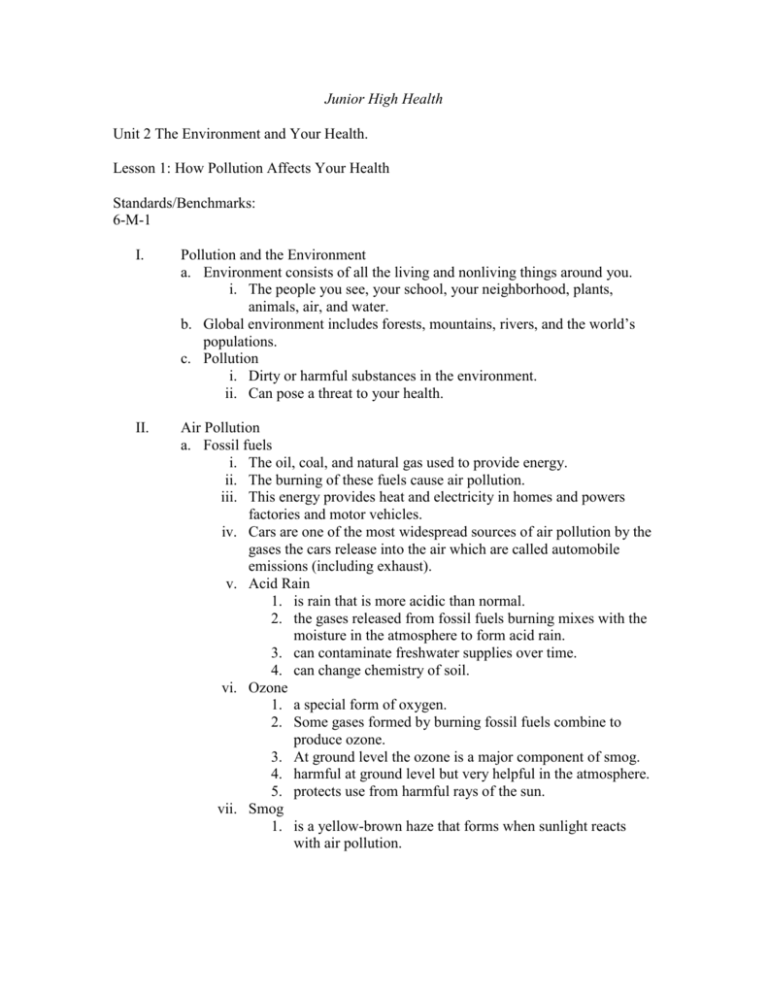
Junior High Health Unit 2 The Environment and Your Health. Lesson 1: How Pollution Affects Your Health Standards/Benchmarks: 6-M-1 I. Pollution and the Environment a. Environment consists of all the living and nonliving things around you. i. The people you see, your school, your neighborhood, plants, animals, air, and water. b. Global environment includes forests, mountains, rivers, and the world’s populations. c. Pollution i. Dirty or harmful substances in the environment. ii. Can pose a threat to your health. II. Air Pollution a. Fossil fuels i. The oil, coal, and natural gas used to provide energy. ii. The burning of these fuels cause air pollution. iii. This energy provides heat and electricity in homes and powers factories and motor vehicles. iv. Cars are one of the most widespread sources of air pollution by the gases the cars release into the air which are called automobile emissions (including exhaust). v. Acid Rain 1. is rain that is more acidic than normal. 2. the gases released from fossil fuels burning mixes with the moisture in the atmosphere to form acid rain. 3. can contaminate freshwater supplies over time. 4. can change chemistry of soil. vi. Ozone 1. a special form of oxygen. 2. Some gases formed by burning fossil fuels combine to produce ozone. 3. At ground level the ozone is a major component of smog. 4. harmful at ground level but very helpful in the atmosphere. 5. protects use from harmful rays of the sun. vii. Smog 1. is a yellow-brown haze that forms when sunlight reacts with air pollution. III. IV. V. 2. both smog and ozone can cause many kinds of respiratory problems; people with asthma, emphysema, or bronchitis may be affected. Water Pollution a. 40% of the nation’s rivers, lakes, and coastal waters are now to severely polluted to swim or fish in. b. Dangerous in drinking water supplies. c. Two sources of drinking water i. Surface water- lakes and rivers ii. Groundwater-water that collects under the earth’s surface. d. Lead-contaminated water i. Damage the brain, kidneys, nervous system, and red blood cells. e. Sewage i. Another source of water pollution; garbage, detergents, and other household wastes washed down drains. ii. Waste materials can spread diseases such as hepatitis A, typhoid fever, and cholera. f. Oil spills and chemical waste g. Rainwater and snowmelt i. Runs over land and picks up chemicals and brings them to surface or ground water. Solid Waste a. Each person produces an average of 4.4 pounds of garbage per day. b. Biodegradable i. Easily broken down in the environment. ii. Newspaper or left over’s from dinner slowly disintegrate if left outside iii. Turns into good for fertilizing gardens. iv. Nonbiodegradable material 1. Plastics would not disintegrate over time. c. Landfills i. Huge, special designed pits where waste materials are dumped and buried. ii. Most trash produced goes here. iii. Are sealed to keep toxic chemicals do not leak out and contaminate the groundwater. iv. Biodegradable materials cannot break down inside a landfill. Hazardous Wastes a. Human-made liquid, solid, or sludge wastes that may endanger human health or the environment. i. Detergents, paint, batteries, plastics, fabrics, pesticides, and some types of insulation. b. Cause damage to the brain, liver, and kidneys; also develop diseases such as cancer. c. Damage to forests and farmlands. d. Disposal of hazardous wastes requires special handling so they will not be releases into the environment. Activity 1: Students will brainstorm using Thinking Maps to come up with ways to GO GREEN. As a class, the students will come up with a project to display at the St. Tammany Parish Fair. Homework: http://www.epa.gov/recyclecity/mainmap.htm
